The Essential, Complex, and Often Bizarre Relationships Between Plants and Insects
The purple pitcher plant, Sarracenia purpurea, is one of those species that are rare in nature but common in the gardens and collections of carnivorous plant enthusiasts. Found in sphagnum bogs from Pennsylvania, Ohio, and New York all the way south to Georgia and the Carolinas, the purple pitcher plant has been studied in detail due to one particularly uncommon trait: it captures and “feeds” on insects. The Center for Plant Conservation’s National Collection lists one subspecies (Sarracenia purpurea ssp. heterophylla) and two endangered or threatened varieties (Sarracenia purpurea var. montana and Sarracenia purpurea var. venosa), all unique versions of this extraordinary species.
Carnivorous plants (from the Latin meaning “meat eater”) constitute a diverse—but uncommon in nature—group of terrestrial and aquatic plants that possess adaptations to entrap animals, primarily insects, but also other invertebrates and even small vertebrates. Some of them are truly spectacular, such as the giant modified leaves of the Bornean genus Nepenthes that can entrap lizards and even rodents. Our North American pitcher plants may not be as gigantic in volume, but they are stunning in size and adaptations to attract, entrap, and slowly consume insects.
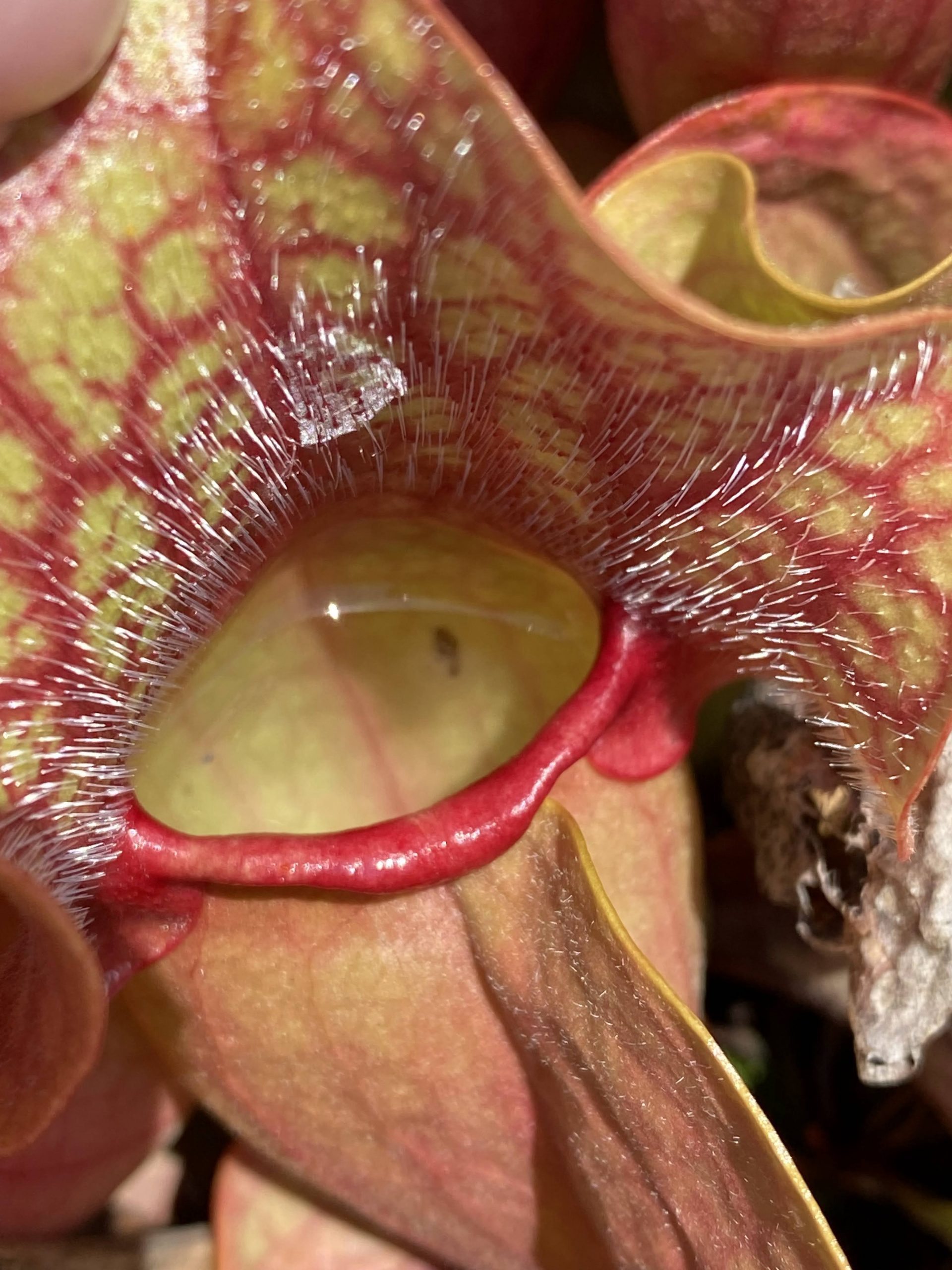
Early in my career as an aquatic ecologist, I became interested in the purple pitcher plant, Sarracenia purpurea, because of yet another unique characteristic: the liquid (mostly water) that its modified leaves contain is not only a way to drown the insects that it attracts, but it is also home or habitat to at least three species of flies (Diptera) and a fair number of microscopic invertebrates. At that time, I was studying the fly family Chironomidae, or non-biting midges, and had learned about one species, Metriocnemus knabi, that lives exclusively in purple pitcher plants. Together with a flesh fly and a mosquito, these three insects not only manage to avoid the set of “traps” that the pitcher plant has to catch insects, but they feed on the insects the plant catches or the microorganisms that take advantage of the nutrients that the dead insects provide.
Essentially, the purple pitcher plant is an example of what is known as “Phytotelmata”—from the Greek words for plant and pool, meaning “plant-held waters.” Other examples of phytotelmata are tree holes, bromeliads, and the tropical bird of paradise plants, some of which collect water in their flower bracts. While sampling the insects that live in the leaves, I noticed almost fully-grown midge larvae in pitchers that had opened recently, even the night before. The larvae of the midge undergo four growing spurts, called “instars,” which in this species may take several weeks or more to complete. Late-season larvae can overwinter in the pitchers and continue their life cycle in the spring. My question was, how can a recently opened pitcher have 3rd and 4th instar midge larvae if it has just opened? I hypothesized that the larvae must have left their old, original pitchers and colonized the fresh, new pitchers just as they opened.
As the pitchers age, they become crowded and stuffed with dead insects and potential competitors, low in oxygen, and perhaps dryer—in other words, less than ideal conditions to complete the larval development. I worked a whole summer trying to support my hypothesis, but to no avail. I could not document what was potentially a unique larval behavior, leaving the water of its original pitcher to find another younger pitcher with better conditions to complete development. The question remained a mystery to me and my research associates until now. A recent paper published this year documented the migration from old to fresh pitchers by the larvae of Metriocnemus.
Phytotelmata also led me to discover a new chironomid species in ground bromeliads in Florida. I spent several weeks collecting larvae from the water inside the bromeliads and rearing them to the adult stage, looking for males and females but finding only females. I realized that these midges are unusual in that the species has no males, only females, and they reproduce by parthenogenesis (essentially, cloning). I sent specimens of larvae, pupae, and adults to a taxonomist colleague for confirmation, and he described the species and named it Phytotelmatocladius delarosai—which was very cool.
Years later, I worked for six and a half years as Director of the famous La Selva Research Station in Costa Rica, part of the Organization for Tropical Studies. The trees in this spectacular rainforest are often covered with bromeliads, some of which have rosettes of leaves as big as a four-place round table. Bromeliads don’t need soil to survive. The axils of their leaves collect rainwater that often carries minerals, organic matter such as dead leaves, fruits, small branches, and insect and bird feces, picked up as the rain runs through the forest canopy. These aerial pools of water make an ideal aquatic habitat for insects, frogs (such as the famous tiny poison frogs of the genus Oophaga, which use these pools to raise their tadpoles), and other small animals.
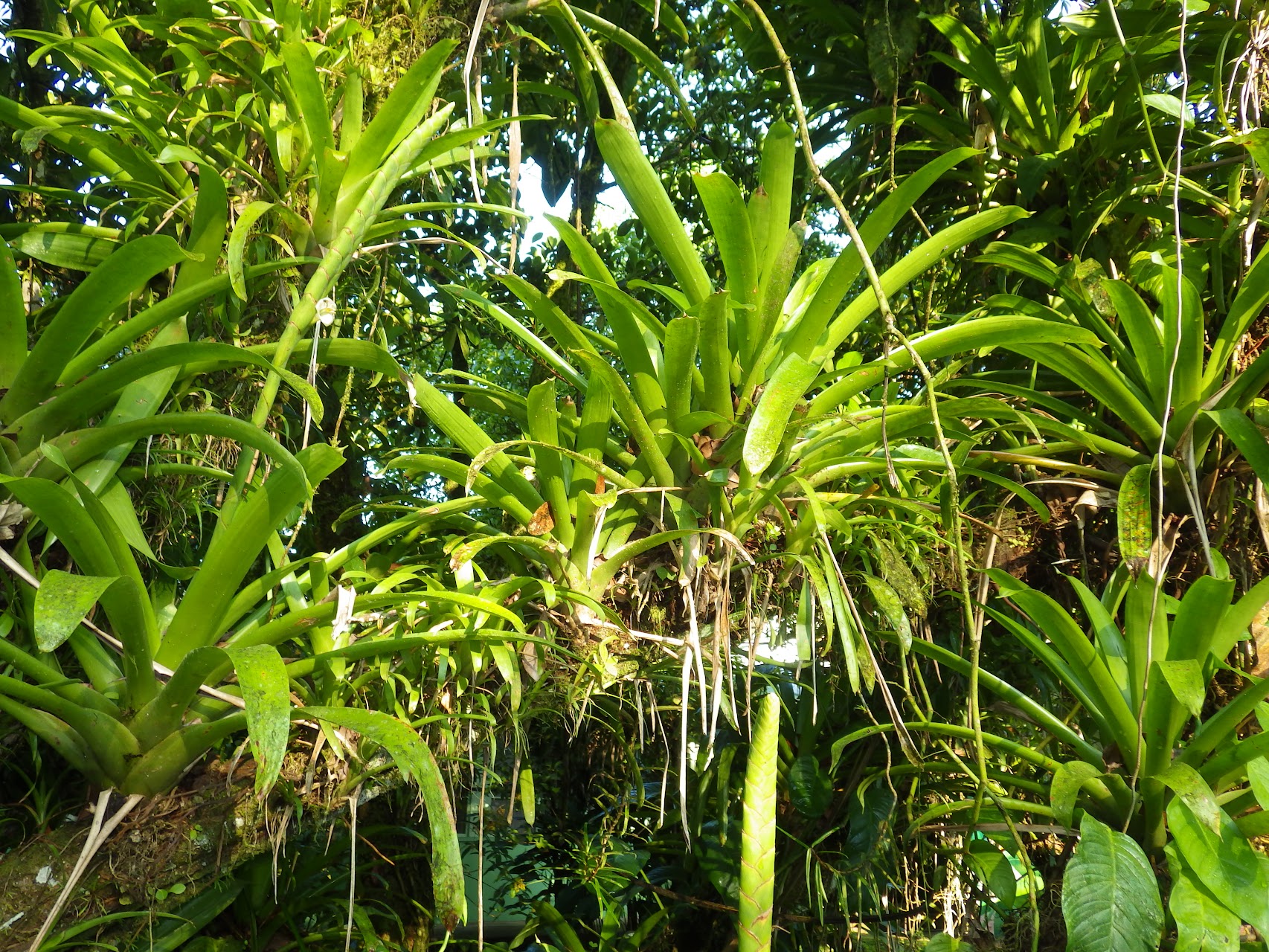
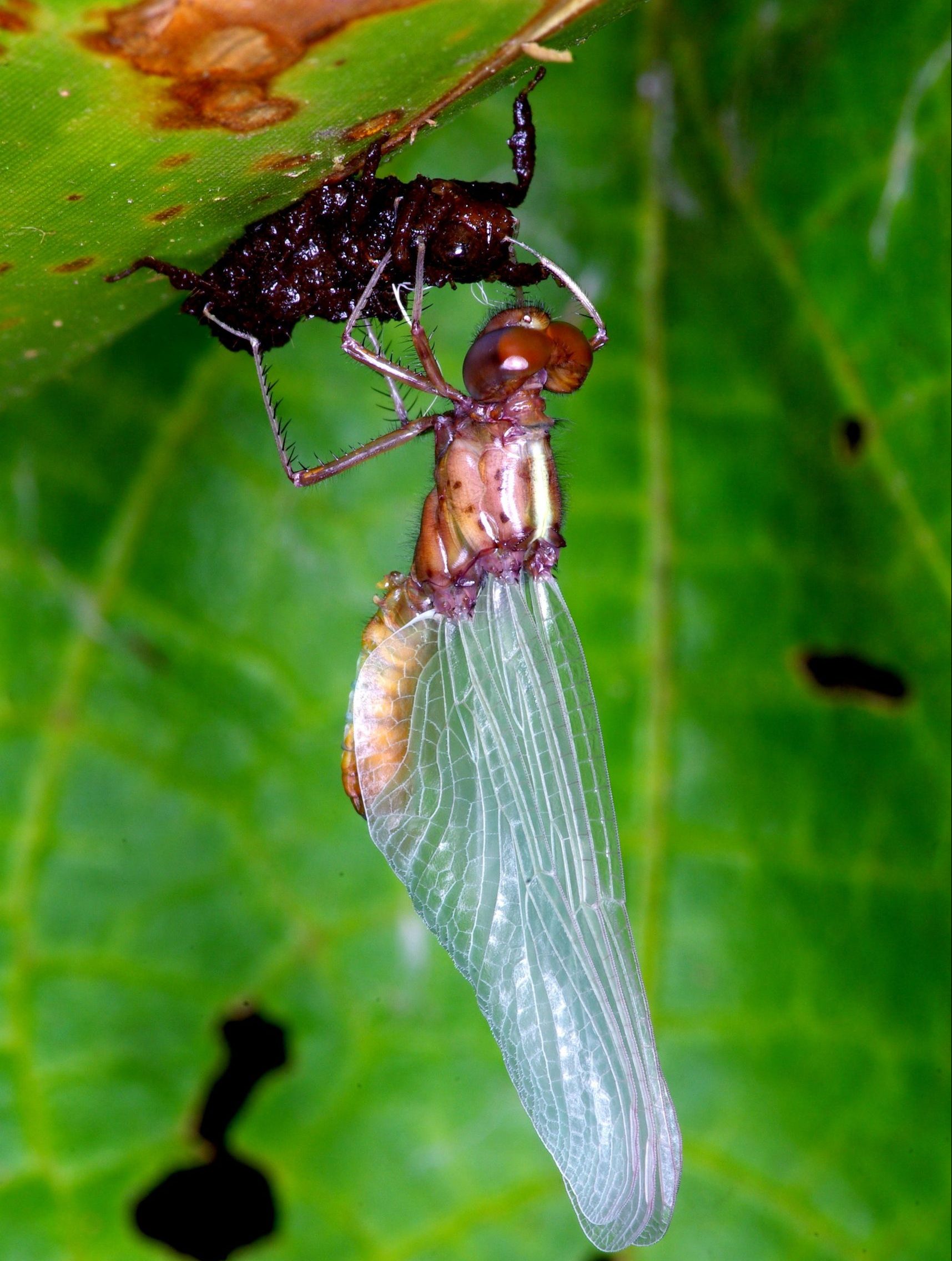
One day, while strolling through the walkways within the station, I noticed a small brown thing stuck under the leaf of a bromeliad. It looked familiar, so I got a ladder, climbed to reach it, and inspected it. It was the exuvia or cast skin of a dragonfly! I knew that some damselflies use tree holes filled with water to lay their eggs, providing a secluded and safe environment for the developing larvae. But dragonflies? I had never heard of them using bromeliads. So, I paid more attention. From that day on, I regularly looked under bromeliads, sometimes using binoculars, to see if I could find a larva ready to emerge as an adult.
It took several weeks, but early one morning, I saw a still-wet larva outside the bromeliad pool, hanging upside-down from the back of a leaf. My vigil started. It took about two hours to observe and photographically document the emergence of a beautiful dragonfly from its larval skin. Over the next few weeks, I looked for more specimens and sent them to a friend specializing in Odonata, the order of dragonflies and damselflies. It ended up being a new species for science. We called it Erythrodiplax laselva, in honor of its place of discovery.
I want to share one more story of plants and insects, also observed at the La Selva Research Station. The relationship between orchids and bees is an incredible story of coevolution. The brilliantly colored, metallic-looking orchid bees of the rainforest are spectacular in their own right. Some species are the pollinators of relatively rare orchids of the genus Gongora. Two species grow wild on the campus of the research station: Gongora leucochila (flowers of mottled white with pinkish-red stripes) and Gongora unicolor (uniformly red flowers). A species of Euglossa metallic green orchid bee visits both species of orchids, together with other insects. But the bee is the actual pollinator and star of this story.
Only the male bees visit the impressive sprig of flowers when they open. The males collect volatile compounds (perfumes) from the petals and other areas of the flowers, using specialized brushes on their front legs. They store the flower’s perfume in special pouches on their rear legs, where it combines with the scents of similar flowers to create a unique fragrance used to woo females in an elaborate and energetic courtship flight. The orchid’s investment in producing these chemicals is substantial and has one important purpose: to draw the bees to the place where the orchid stores its pollen. The storage structures (“pollinia”) consist of two tiny sacks filled with pollen that are attached to the flower by a sticky tip (see photo below) and covered with a detachable cap. The idea is that a male bee, competing with other males in a frenzy to collect the perfumes of the flower, will come in contact with the pollinia, which stick to the bee’s back. As the bee flies to other orchids, the pollen sacks will start to dry and eventually release the pollen close enough to a receptive flower of the same species to successfully carry out pollination.
I observed, photographed, and filmed hundreds of male bees visiting Gongora flowers over two years. Only twice was I able to watch a male collect pollinia and carry them off on his back (see photo at right). It is a rare set of circumstances, perfect timing—and even a bit of luck—for the male to encounter the pollinia in the right way. However, it happens often enough to maintain a sparse but healthy population of these beautiful, rare orchids in the immense hustle and bustle of the tropical rainforest.
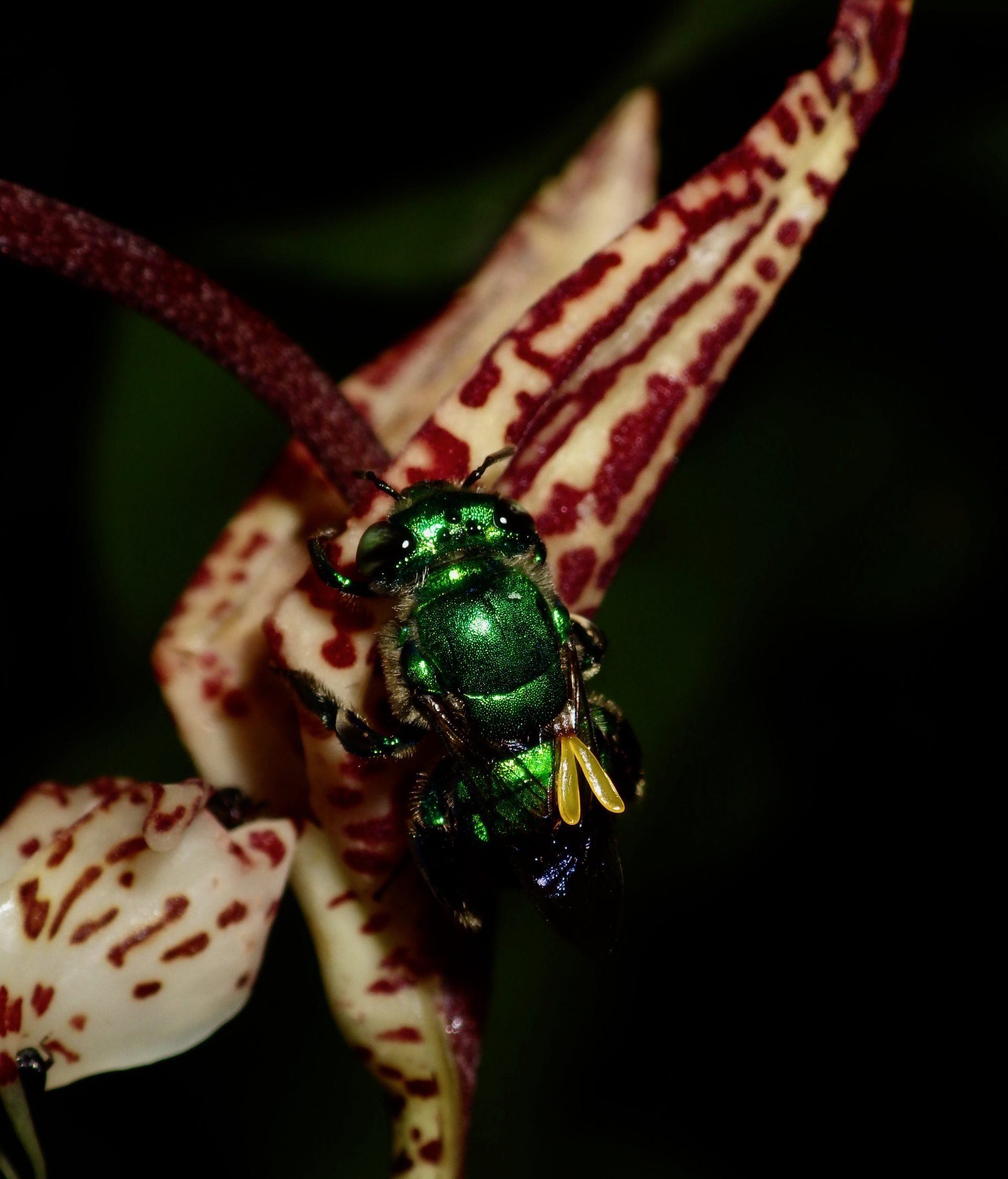
There are innumerable examples of rare plant/insect interactions, all deep in complexity, shaped and honed by hundreds of thousands of years of evolution. Rare plants cannot survive without their insect associates. Studying and understanding these relationships is crucial to conserving plants and their pollinators.
-
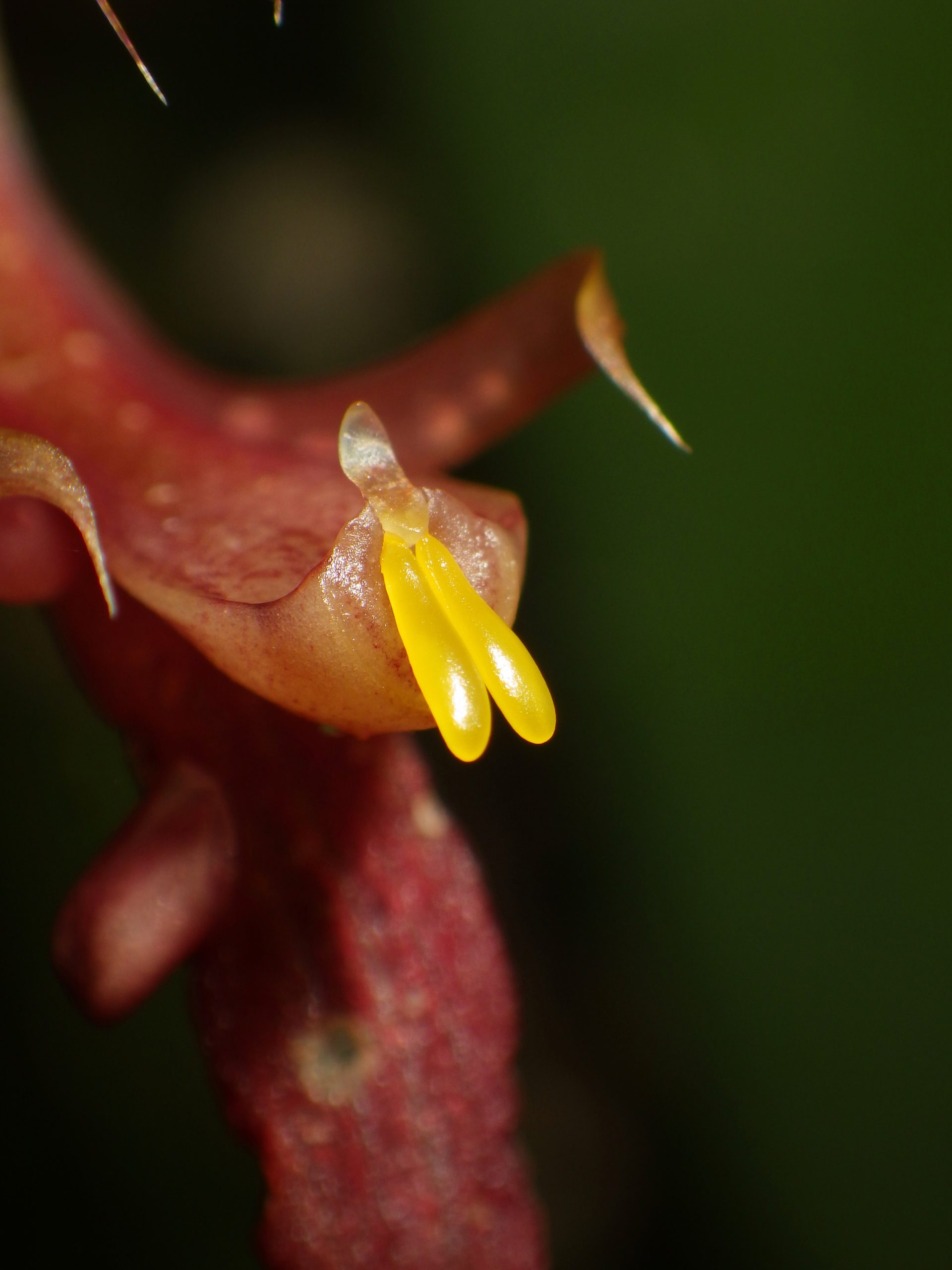
An exposed pollinium (minus the cap that protects it from dehydration) shows the two little sacs that contain the flower’s pollen and the sticky tip. Photo credit: Carlos L. de la Rosa. -
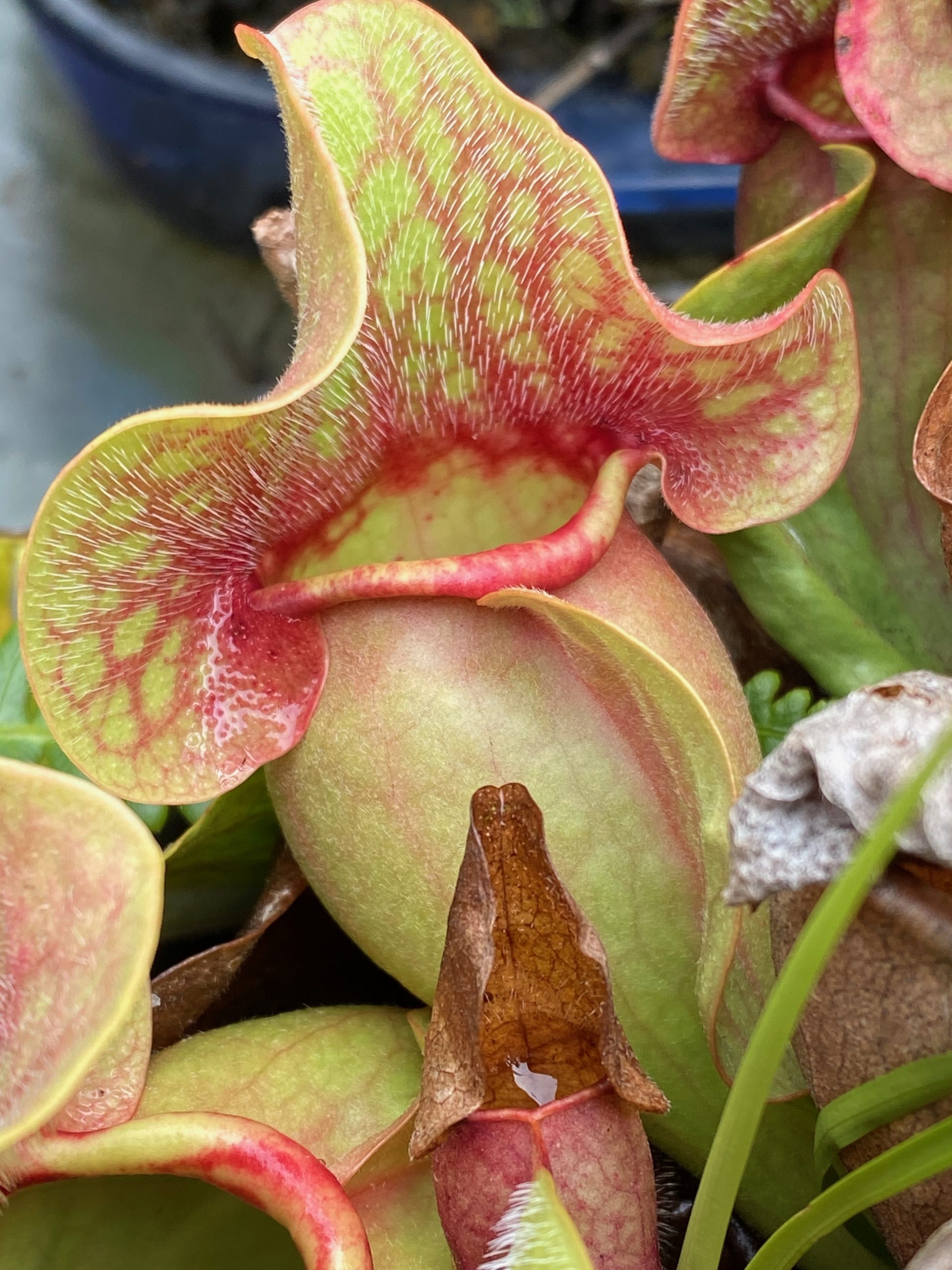
Sarracenia purpurea. Photo credit: Carlos L. de La Rosa. -
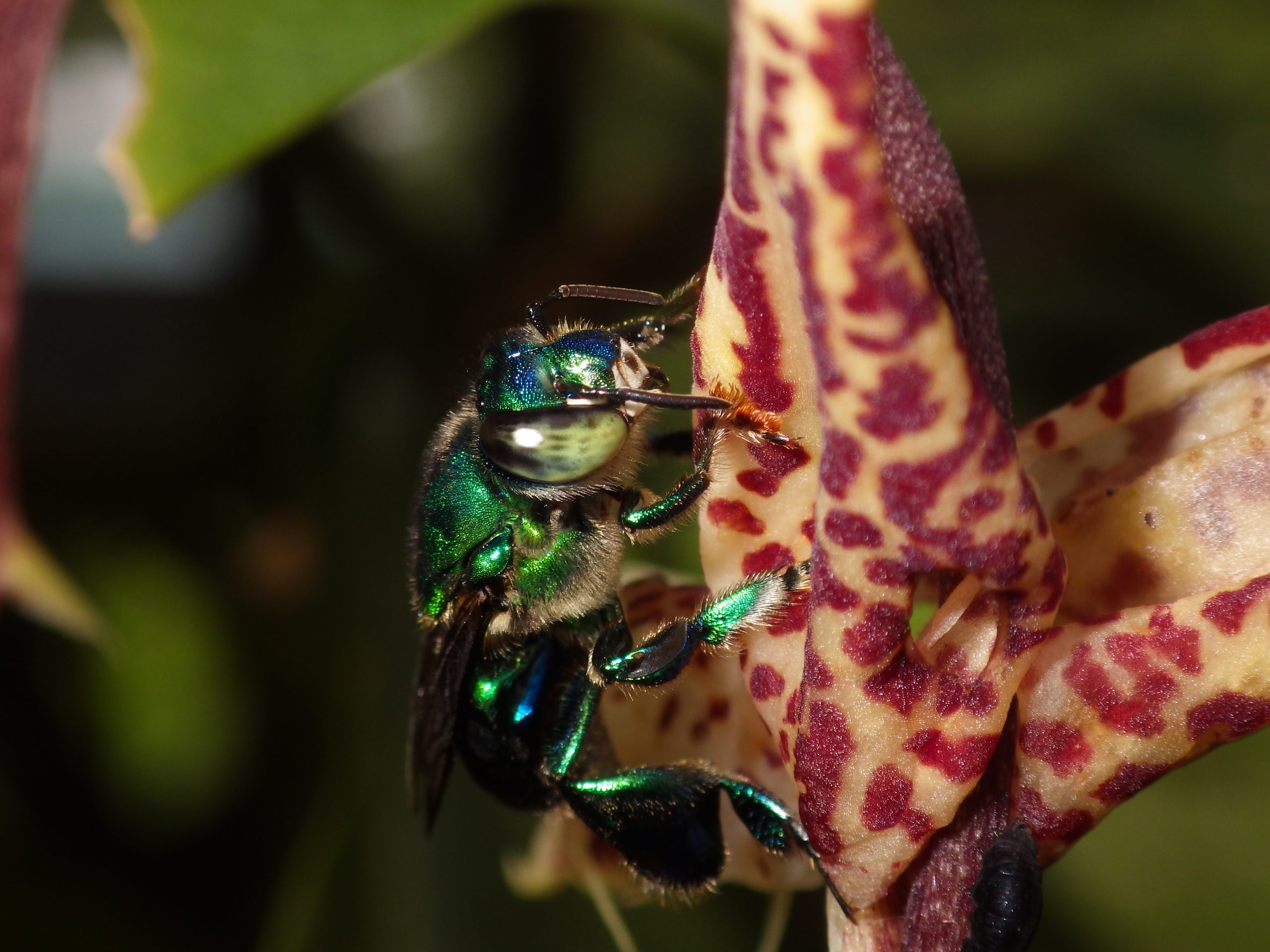
Male Euglossa sp. scraping the volatile compounds (perfumes) from a Gongora leucochila flower, using little brushes on his front legs. He will store these perfumes in special receptacles on his hind legs. Photo credit: Carlos L. de la Rosa.